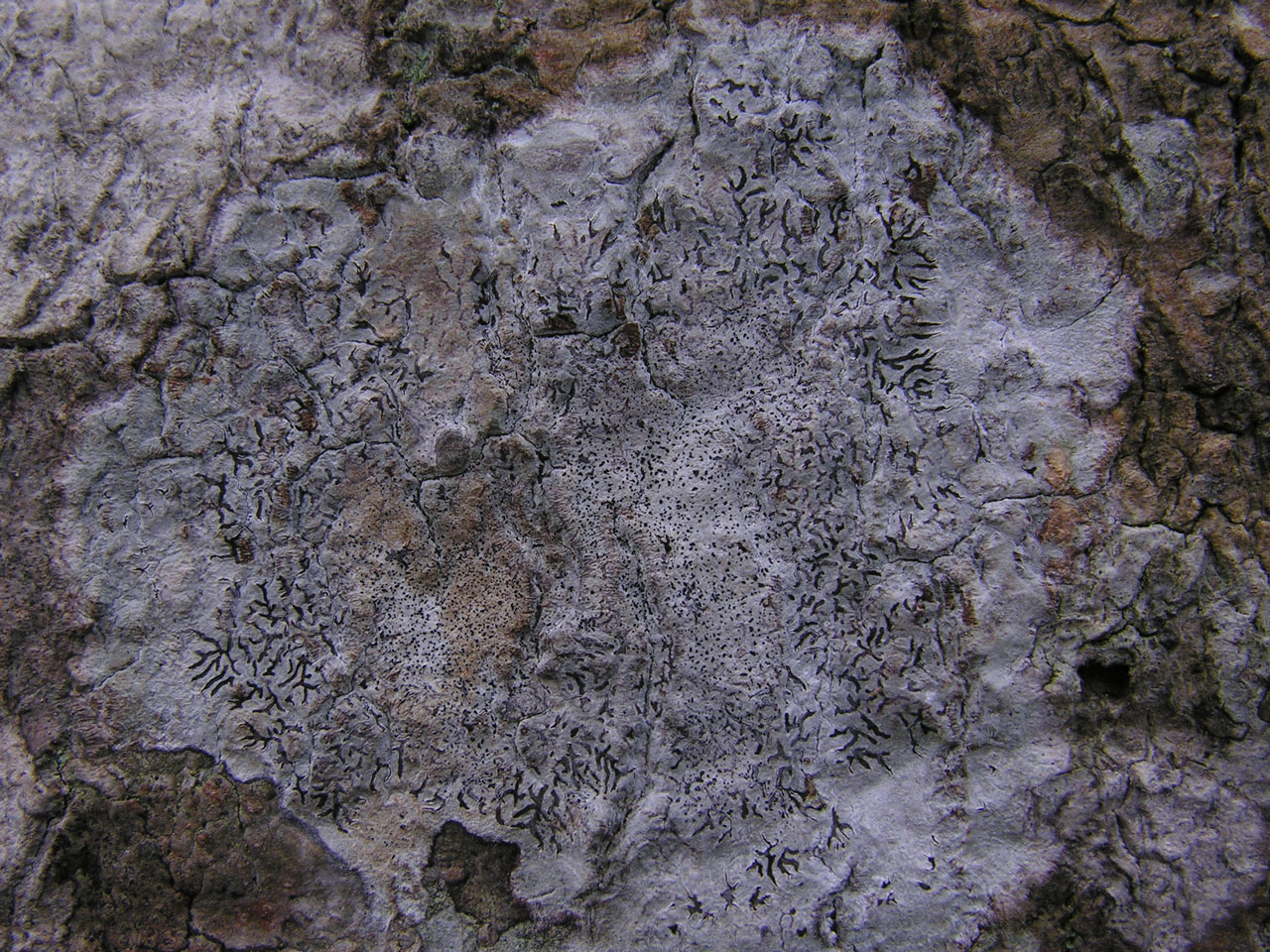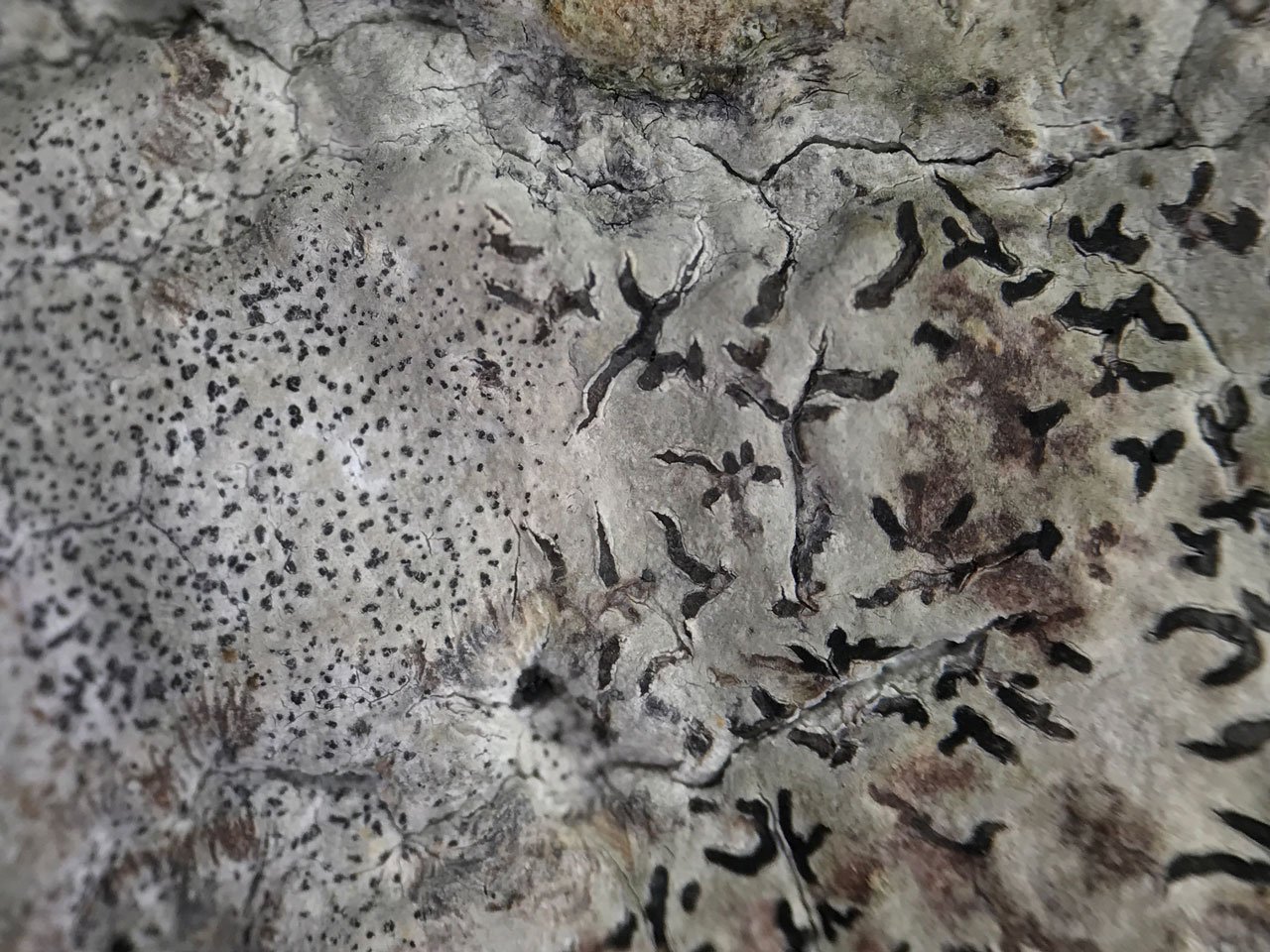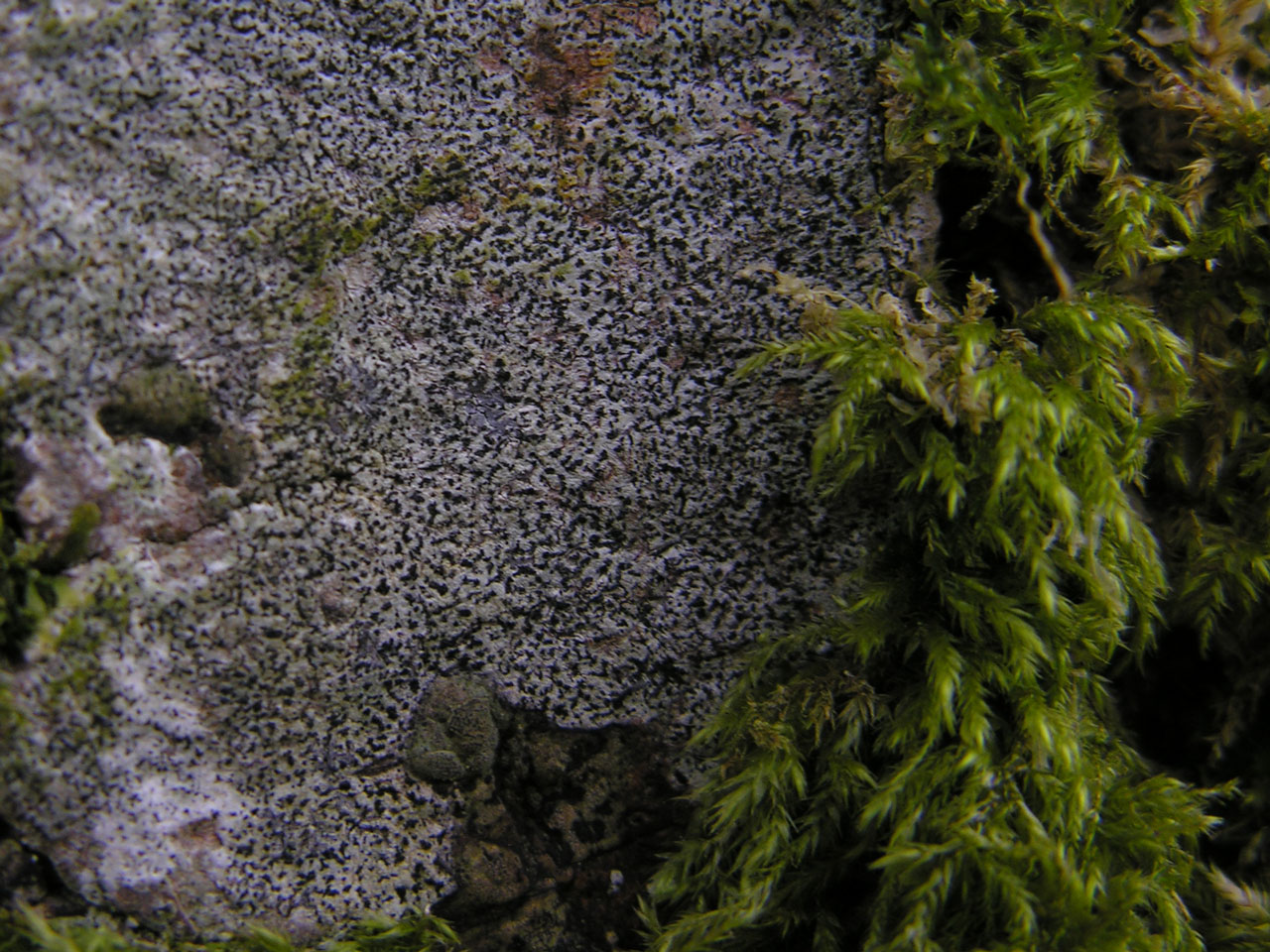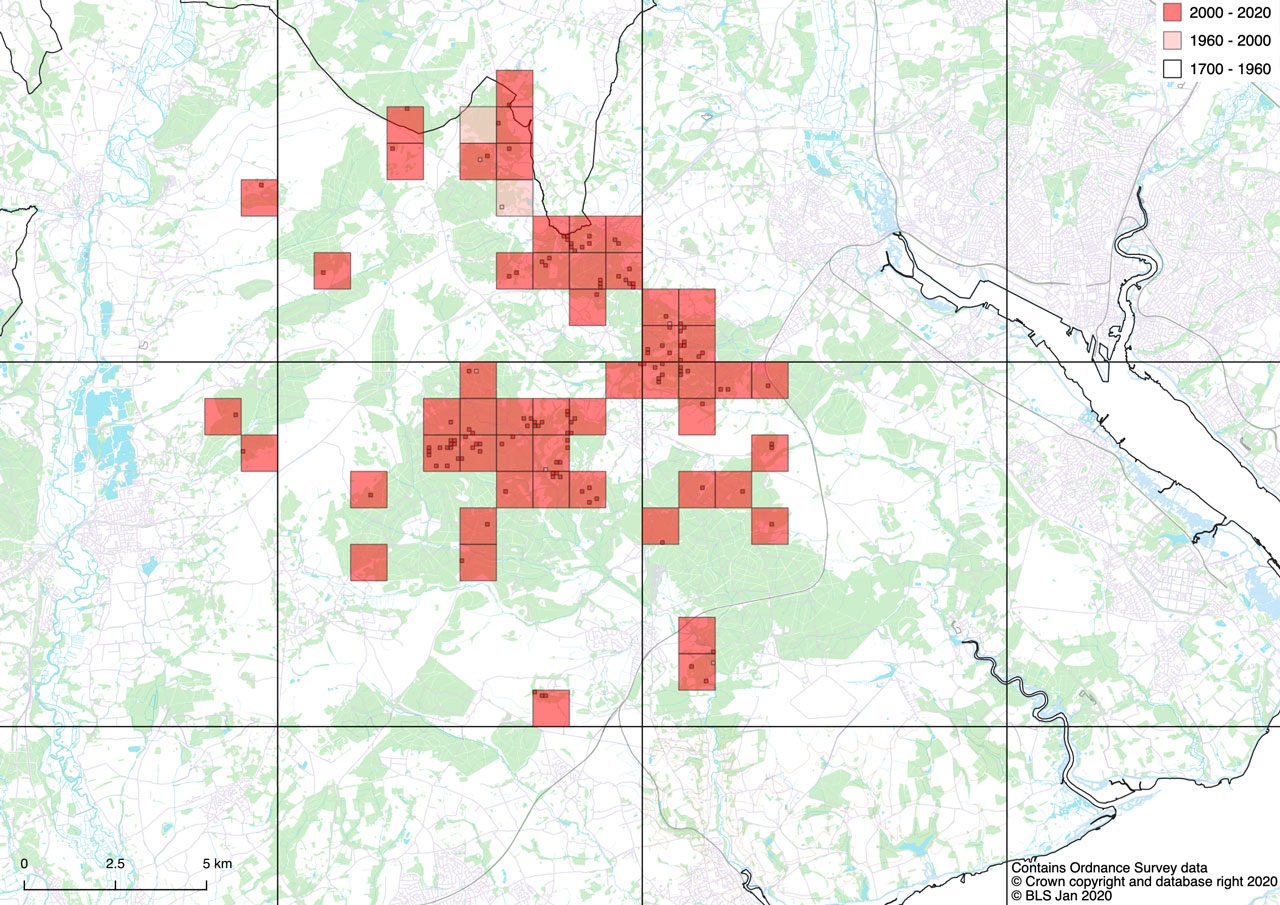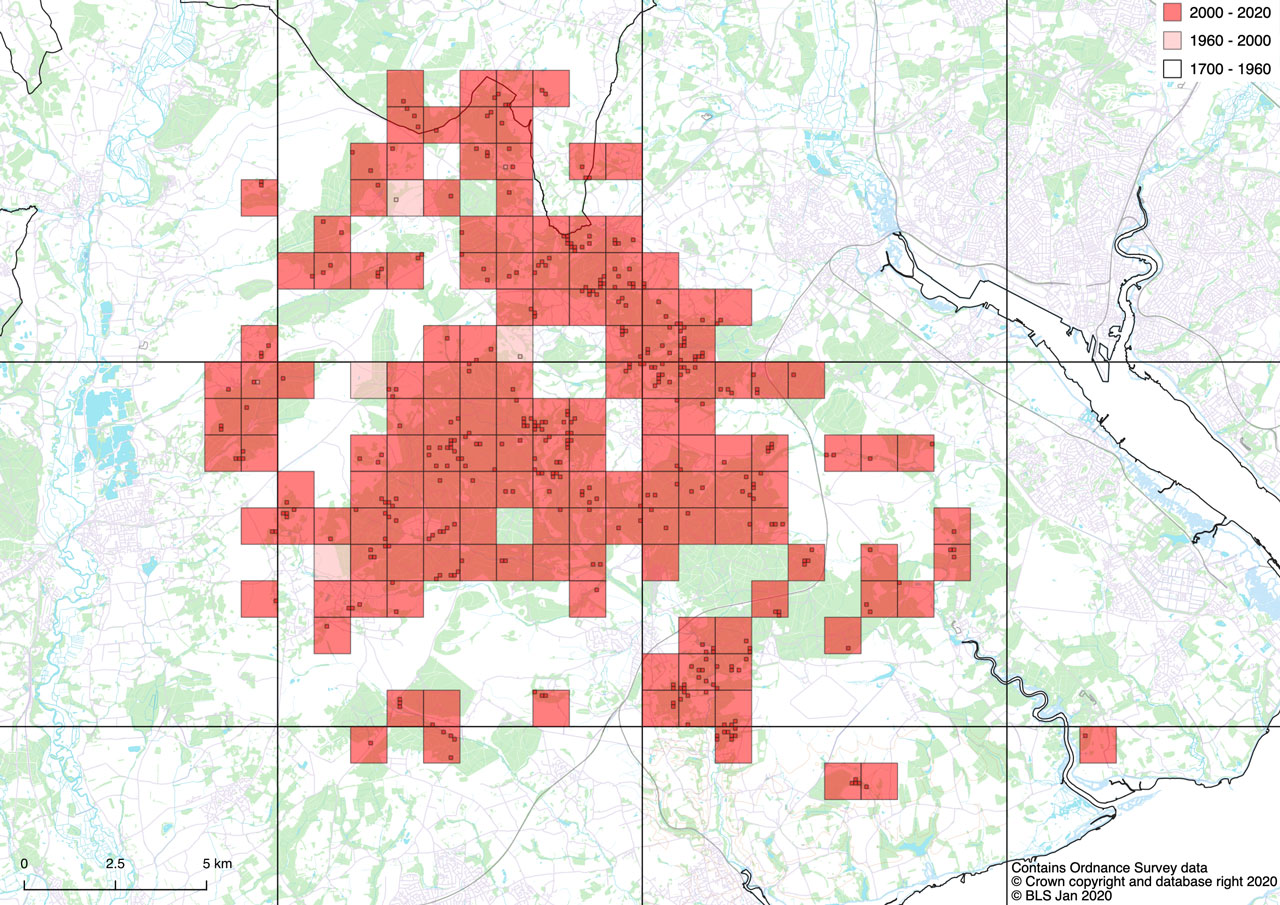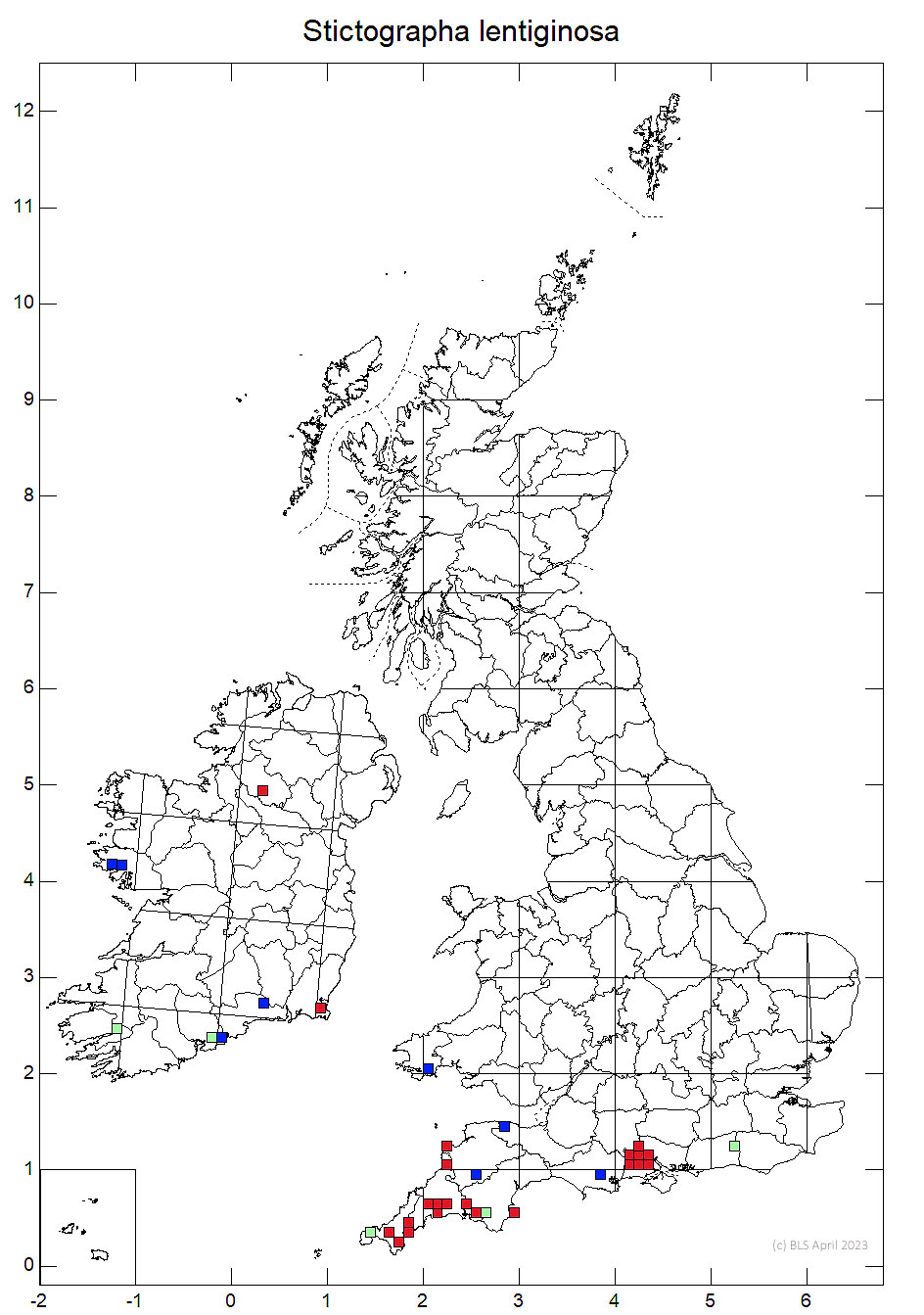Stictographa lentiginosa
Lichenicolous on Phaeographis dendritica, mainly on veteran trees, with the thallus immersed in the host but with small short oblong to ellipsoid lirellae visible on the surface. Weekly parasitic, but the apothecia of Phaeographis dendritica are suppressed where the infection is strongest. Occasionally the Phaeographis thallus is taken over completely by Stictographa lentiginosa apothecia.
The combination of short oblong to ellipsoid lirellae 0.1-0.5 × 0.1-0.2 mm, forming patches on the host Phaeographis dendritica is highly distinctive. Internally it is equally distinctive with the thick exciple extending below the hymenium, becoming stipe-like and extending into the host. The spores are one septate, brown and shoe sole shaped, 10-13.5(-16) × 5-7.5 μm.
Sometimes accompanied by a Taeniolella, which may be Taeniolella hawksworthiana, and is potentially the anamorph of Stictographa lentiginosa.
An example of a lichenicolous fungus that is much more restricted in the habitats occupied than the host. Phaeographis dendritica is a widespread species of less disturbed woods which readily colonises slower growing young trees and bushes and spreads into young growth woodlands. Stictographa lentiginosa in contrast is largely confined to veteran trees with the majority of occurrences on Phaeographis dendritica on veteran Beech and Holly in old growth stands. Stictographa lentiginosa rarely occurs on other tree species such as Oak, although the host is widespread on these. This could be an interesting research topic; is this related to the population density of the host and how strong is the apparent preference for host thalli growing on smooth barked veteran trees?
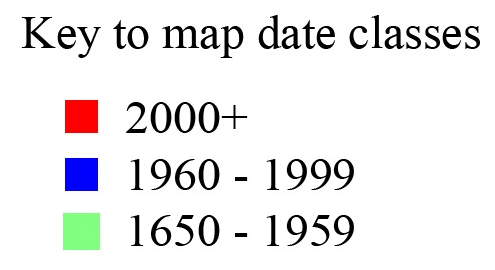
Widely recorded in old woodlands and parklands in the New Forest and Cornwall, very rare beyond in the south west of England and in Ireland, with a single record from south west Wales. There is an very old record from Sussex.
Considered Near Threatened in Britain and listed as a schedule 41 species in England and as a Section 7 species in Wales. This fungus has a substantial population in the New Forest, Hamphire but is much rarer beyond. Likely to be dependant on the maintenance of large populations of its host on suitable smooth barked veteran tree, so potentially threatened by increased shading within old growth woodlands, especially due to declines in grazing within pasture woodlands.
